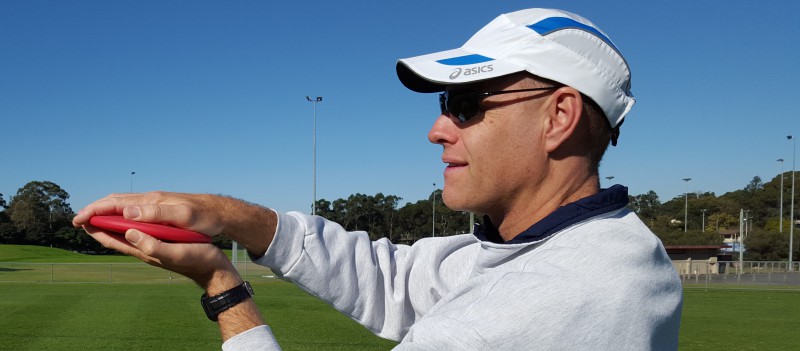What To Include In a Sprints Session For Young Athletes
Get the E-Book Version Of This Post Including A Bonus Cheat Sheet
In this article I outline a thirty-minute sprints session that I often use when conducting a coaching clinic in primary schools.
There is a vast array of activities that a coach can do during a sprints session with a group of kids. I particularly like the session outlined below as it is easy to set up and conduct, and keeps the group active.
Content
The content of this session is:
- Basic sprinting technique
- Standing starts
- Shuttle relays
(The plan assumes that a fun warm up has been included at the beginning of the session).
Considerations
I find that formal sprint drills are not popular with school groups and many school children do not have the patience or interest in performing them. It is unwise to try to get too technical with a school group. They will lose interest very quickly and often feel awkward and embarrassed if asked to perform drills that require a level of coordination that is currently beyond their abilities. Therefore, most of the activities below are high activity, gross motor movements that require minimal skill to perform.
Sprinting is one of the easier events to teach to a large group if it is kept simple. Minimal equipment is required and it is easy to organize an activity so that lots can be active and minimal waiting time is incurred.

Venue
Much of my sprints instruction in schools is done on unmarked ovals or grassed areas. I have also coached this session on basketball courts and within school halls.
Equipment
Assuming a class size of thirty students, you will need ten dome markers, preferably in five different colours, and five relay batons.
Organization
Groups of up to six students line up behind a different coloured marker, opposite a marker of the same colour placed up to twenty metres away. This will be the activity area. (I have, however, conducted this session over much shorter distances).
See my article Use Colours, Not Numbers When Grouping Kids for more information about using colours to identify groups.
Space the teams far enough apart from each other to avoid interference.
With all of the following activities, up to five athletes (one from each group) will run at a time. The athletes do not run until instructed to do so.
To keep the session moving, the coach may like to start off the next line of runners prior to the previous group reaching the markers at the other end.
When the athletes reach the other end, they stay there and line up again, facing back towards the point from where they have just run. I always instruct the athletes to form a straight line and keep their hands and feet to themselves while they are waiting.

The Basic Working Model
Some of the basic points of sprints technique that can be focused on, depending on the age of the athletes are:
- The head is kept level; vision to the front.
- The trunk and shoulders are held square to the front.
- The head and trunk are held upright.
- The feet and limbs are moved in a straight path.
- The arms are pivoted about the shoulder joint and remain bent at the elbow at approximately 90 degrees.
- The knees and feet should be “picked up”.
- Light, quick movements are used.
- A generally coordinated, rhythmical action is required.
Common Faults
See 10 of the Biggest Mistakes Young Athletes Make When Sprinting for common technical errors that primary school-aged children typically make when sprinting.
Activities
1. Run with “Big Steps”
Aim:
- To get the group active and having fun.
- To experiment with stride length..
Activity:
Ask the athletes to run to the other end as they take the biggest, “bounciest” steps (bounds) that they can. Ask them to count the number of steps that it takes them to cover the distance.
Can they do it in less than twenty strides?
2. Run with Small Steps
Aim:
- To further challenge the students with another fun activity.
- To further experiment with stride length.
- To introduce light, quick steps.
Activity:
The athletes run with fast little (“pitter-patter”) steps to the other end. (They do not have to count their steps!)
- Encourage light, quick steps.
- Watch for the athletes who drag or “rub” their feet along the ground. Ask them to “tap” their feet, not “rub” them along the ground.
- Watch for athletes who simply jog along. Instruct them to move forward at only one foot length at a time.
- Encourage the athletes to “pump” their arms.

3. Run with Arms Folded
Aim:
To emphasize the importance of arms when running.
Activity:
The athletes run over the twenty metres with their arms folded across their chest. Ask those waiting in line to observe the effect that folding arms has on the runner (i.e. what does it look like?)
Once each athlete has attempted running with their arms folded, ask the group:
- How did it feel?
- Was it the best way to run?
- What did it look like?
Common answers are that it was hard and that they felt unbalanced. Some kids notice that the runners’ shoulders were swinging or “wobbling” from side-to-side. Ask the athletes how they would fix this. The answer usually is to “use your arms”. Explain how good use of arms in sprinting will help them be balanced and “not wobble”.
4. Arm Action Rehearsal
Aim:
To introduce a basic arm action for sprinting.
Activity:
Standing in their lines and spaced far enough apart to avoid interference, the athletes rehearse a basic sprinting arm action at increasing speeds.
In addition to the information provided above as part of the “Basic Working Model”:
- The hands should be relaxed as if the athletes are holding a potato chip in each hand. See How Potato Chips Can Help Teach Young Sprinters for more information.
- Allow the athletes to experiment with swinging their arms incorrectly by keeping them straight at the elbow, and also across their body (elbows out) to better understand the advantages of a correct action.
- Ask the athletes to rehearse a sound arm action as they run on the spot.
5. Run with Arms “Pumping”
Aim:
To allow practice of the arm action.
Activity:
The athletes run over the twenty metre distance practicing the arm action learnt previously.
- Emphasize that the athletes “pump” their arms when running.
6. Run “Through Shallow Water”
Aim:
To teach the athletes to “pick up their feet” when they run.
Activity:
Ask the students if they have ever run through shallow water, and if so, what they did to stop themselves from tripping over the water. Answers usually will be that they lift their knees or feet up.
Explain to the athletes that you want them to imagine that there is shallow water covering the twenty metre area over which they are about to run. Instruct them to run “over the water”, picking up their feet.
Be prepared for some interesting interpretations of the skill!
- Watch for athletes who lean back and/or lift their knees too high.
- Some athletes will forget about the arm action.

7. Standing Starts
Aim:
To teach a basic standing start.
Activity:
Firstly, teach the basic “On Your Marks” and “Set” positions for a sprint standing start. See 15 Simple Tips You Need to Know for a Standing Sprint Start for more information.
Watch out for some of the common faults outlined in 10 of the Biggest Mistakes Young Athletes Make When Using a Sprint Standing Start.
After the athletes have had the opportunity to learn the basics, allow them to try a full standing start and sprint over twenty metres. Use a whistle as the “go” signal.
- Recognize and applaud the team that “cheers the best” for their team members.
- Primary school children love to pretend that they are competing at the Olympics or World Championships. Announce that they racing at the (insert school name/town name) Olympics. Encourage the athletes to “wave to the crowd” before racing.
8. Shuttle Relays
Aim:
- To ensure a fun conclusion to the session.
- To provide an opportunity to put everything learnt into practice.
Activity:
Provide some fundamental tips about shuttle relay running.
- Explain the format of a shuttle relay – the teams are divided in half with participants at each end of the “track”. The relay simply progresses back and forth.
- All runners use a normal running action. The relay baton is held at the bottom end. “Pump your arms”.
- The incoming runner holds the baton vertically with an extended arm when nearing the receiver.
- The recipient receives the baton with their arms extended at chest level (not at face level!) and with hands held together in a “butterfly” position (thumbs in; palms facing outwards; fingers extended out).
- The incoming runner approaches slightly to the side of the outgoing runner to avoid interference/collisions.
Conduct one or more shuttle relays. If the teams have uneven number of runners I conduct a “One-minute relay” during which the teams run for one minute. The team that is ahead at the one-minute mark is declared the winner.
Watch for athletes who:
- Hold the middle section of the baton.
- Run the whole way with the baton extended (common with very young athletes).
- Attempt to receive the baton with one hand, or with hands apart.
- As an incoming runner, run directly at the recipient, blocking their way.
Conclusion
This session appears to include a large amount of activities to fit into one thirty minute time slot, but it can definitely be done. The key is succinct explanations, keeping the group moving, and not spending too long on each activity – all of which are good coaching principles when teaching young athletes.
This article has been adapted and updated from an article by the author that first appeared in “Modern Athlete and Coach”, Volume 49, No. 1, January 2011
Share your favourite activities and ideas for a kids’ sprint session!
Help others add to their sprint lesson plan repertoire by sharing your suggestions via the reply/comment section of this blog. You can also contact me using the below details.
Get the E-Book Version Of This Post Including A Bonus Cheat Sheet
If this post helped you please take a moment to help others by sharing it on social media. If you want to learn more I encourage you to leave questions and comments or contact me directly.
If this post helped you please take a moment to help others by sharing it on social media. If you want to learn more I encourage you to leave questions and comments or contact me directly.
Darren Wensor is a sports development professional, coach educator, specialist coach of young athletes, and founder of the blog coachingyoungathletes.com. Learn more about him here and connect with him on Twitter, Facebook, Linkedin, or via email. Check out Coaching Young Athletes on YouTube, the Coaching Young Athletes podcast, and the Coaching Young Athletes E-Book Series.


I also using sitting starts, kids are across a line, hands by sides and feet together on command go, kids rotate and plant hands naturally getting up as if in a block start.
LikeLike
Great idea that I haven’t tried for a while. I will have to include it in a session again soon. Thanks!
LikeLike